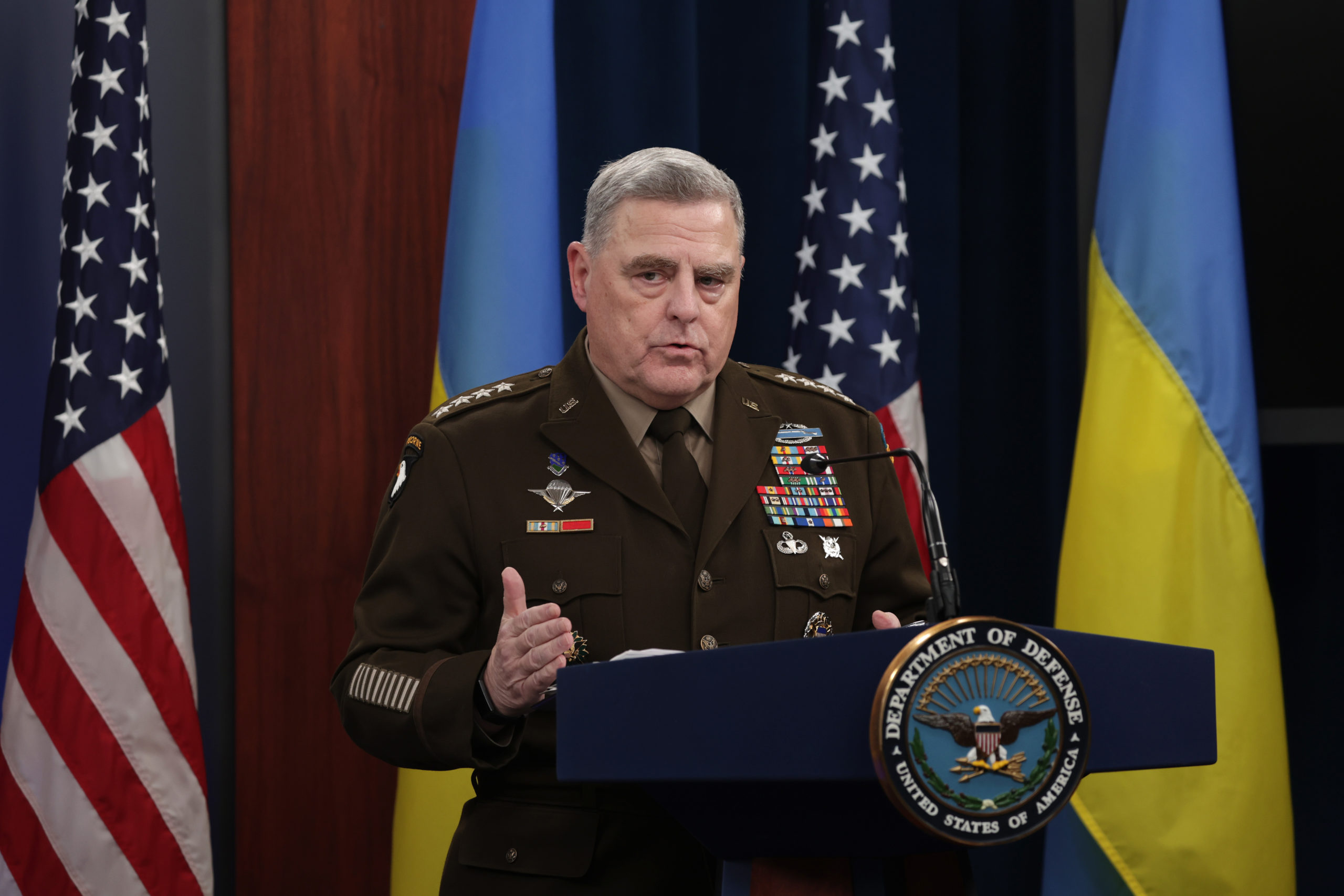Of Course Trust in the Military Has Declined
Is anyone really wondering why public confidence in the military’s upper echelons is declining?

The American armed forces, though they remain among the most respected institutions in the country, are set to be a casualty of polarization. The Reagan Foundation released its annual National Defense Survey last week and reported that trust and confidence in the military has declined by a staggering 22 points in recent years. The principal driver of diminished trust in the armed forces was their perceived politicization.
According to the survey, in 2017 some 70 percent of Americans trusted the military; in 2022, only 48 percent did. In response to new questions from the Foundation posed to uncover the basis for the decline, more than 60 percent of respondents cited the military’s "politicization." The percentage was roughly equal across Democrats, Independents, and Republicans, and similarly uniform declines occurred in their assessment of leadership's competence, too, including the commander-in-chief and the flag officers.
Democrats and Republicans diverged on what politicization meant, however, in ways that reflect their respective parties’ priorities. Democrats allege the military is riddled with far-right extremists and systemic racism. Republicans argue "woke" policies promoted by the Democratic Party have dissuaded potential volunteers from enlisting.
As the Department of Defense has uncovered, increasing numbers of eligible Americans are either uninterested in or outright opposed to serving in the military. Recent numbers are bleak: the Army will miss its recruitment target by 30,000 soldiers. According to the Reagan Foundation survey, among respondents aged 18 through 29, only 13 percent were highly willing to join and only 25 percent were somewhat willing. This focus on the eligible population is appropriate but, as the Department of Defense has also found, substantial portions of this cohort are already ineligible because of educational shortcomings, physical unfitness, and criminal records.
Left unexamined in analysis of declining enlistment is an underappreciated truth among servicemembers and defense observers: most recruits come from similar regions around the country and, indeed, usually from a long line of airmen, Marines, sailors, and soldiers in their family. According to the Council on Foreign Relations, the top five states for recruitment in 2018 reflected their large populations: California, Texas, Florida, Georgia, North Carolina, and New York (six were listed in the report). But when recalculated as a ratio of the eligible population, the top five were South Carolina, Florida, Hawaii, Georgia, and Alabama. Except for Hawaii, each of these states are in the Deep South and governed by entrenched conservative Republican trifectas. Brown University examined the per capita distribution of servicemembers who deployed overseas in post-9/11 wars and the same five states appeared among the top seven.
The current predicament was, in part, inevitable given the transition from a conscription force to All Volunteer Force. Established in the wake of the Vietnam War, those self-selecting to enlist were not the members of the left who burned their draft cards and took over their college campuses or their progeny. The Americans who volunteered saw a path for educational and professional advancement as well as patriotism and fidelity to their regional culture or familial heritage. Academic studies and informal surveys have borne this out: the officer corps leans Republican and veterans have been, up to the 2020 election, generally more conservative than the general public.
Fundamentally, a hierarchical institution premised on patriotic sacrifice to the country and a strict code based on traditional values that is populated by individuals with the same inclinations, hometown, and community will be invariably self-reinforcing. Civil-military relations scholars have recognized the phenomenon and worry the military is increasingly disconnected from its civilian counterparts. More gravely, some worry the military—culturally segregated from the public it protects—may deem that public unworthy of its protection and choose to act autonomously.
This has not come to pass. But, for the sins of a few—the small number of current and former servicemembers who participates in the January 6 riots—the punitive left has concluded the opposite. Progressives deem the military unequal to the society it serves and in need of re-engineering. In the first year of the post-Trump era, the Biden administration launched an initiative to insulate service members from extremist movements. Steps include revisiting the definition of extremism and updating screening procedures. Opponents denounced the initiative, arguing it would categorize mainstream positions as extremism. The Department of Defense then ordered servicemembers to get vaccinated or be discharged.
Subscribe Today
Get daily emails in your inbox
Later, the chairman of the Joint Chiefs of Staff’s comments about critical race theory prompted concerns about the nature of diversity initiatives at the Pentagon. Diversity is a commendable goal and many servicemembers cherish the opportunity to serve alongside their fellow Americans from differing backgrounds. However, for liberal Democrats, diversity is not an aspiration but an obsession. The left might not overtly seek quotas but its irrationalism in pursuit of diversity has resulted in absurdities.
In this milieu, incompetence at the presidential level left the military scrambling to exit Afghanistan, retreating in a manner evocative of the humiliating withdrawal from Saigon. How many volunteers observed all of the above and decided to choose another path? Until those who would have been volunteers are surveyed, informed commentary as to why recruitment is suffering remains mere speculation.
And is it really any wonder that there is declining trust in the armed forces, too? President Biden has denounced much of the country as “semi-fascist” and stood before the American people to declare America First conservatives a threat to democracy. Even if your parent, your spouse, your sibling, your child, or your neighbor serves or has served in the U.S. armed forces, would you trust a military led by such a commander-in-chief?